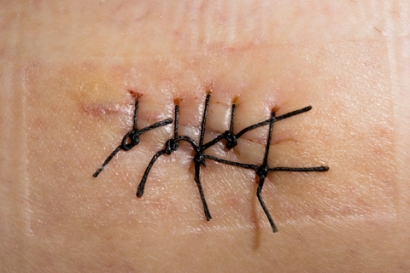Skin Cancer Melanoma
Sun Protection is a fact of life™
Skin cancer melanoma is without a doubt the most deadly form of skin cancer, but fortunately it only accounts for approximately 3% of skin cancer cases, but then again, one needs to bear in mind that skin cancer is the most common cancer of all.
In fact, melanoma is known to cause thousands of deaths each year, and the most disturbing thing of all is that the number of casualties continues to rise.
Essentially, skin cancer melanoma is a malignant tumor which originates in the special skin cells which are responsible for the production of melanin.

Generally speaking, this is a protective pigment which is what makes tanning possible but when people are exposed to excessive sunlight, the cells begin producing too much melanin in order to try and protect the skin from the harmful ultraviolet rays.
One should also bear in mind that this process also takes place if the skin is exposed to other types of ultraviolet light as well, and as a result, the cells which are known as melanocytes soon begin to have abnormalities which eventually causes them to become cancerous or some form of skin cancer melanoma.
Interestingly enough, the vast majority of malignant melanoma tumors are usually black or brown in color, although it's not unheard of for them to appear pink or even for them to have no color at all.
Additionally, the tumors can appear anywhere on the body but in most cases they tend to appear on the trunk, the face, the neck, and the legs.
In case you're wondering if you're at risk of developing melanoma then you need to realize that it depends on numerous factors. For example, family history can play a large role, and of course the number of moles you have on your body can also increase the risk.
One also needs to take their past lifestyle into consideration, in that if you frequently got a sunburn to such a point that you had blisters, then you may very well be at risk.
However, most studies seem to suggest that ongoing exposure is probably a bigger concern. Skin color of course also plays a role, in that dark skinned people are at less risk of developing melanoma than what fair skinned people are, but that's not to say that dark skinned people never get skin cancer melanoma.
For the most part, the first telltale signs of the condition involve a change in the shape, size, or color of a mole, although the disease can also appear as a new mole on any area of the body.
With this in mind, it is advisable for you to go see a doctor if you notice any unusual spots or markings on your skin which seem to be changing.
In fact, it's in your own best interest to examine yourself at least once each month using the ABCDE rule.
What is the ABCDE rule?
A = Asymmetry (a mole which is not symmetric could possibly be malignant)
B = Border (The border of a mole should be regular, and free of blurring and/or notches)
C = Color (medical advice should be sought if a mole varies in color or if it consists of different colors)
D = Diameter (if a mole is larger than 6mm, there is a possibility that it could be melanoma. The same applies if you notice an old mole has increased in size)
E = Evolution (when the mole is evolving or changing anyone of its characteristics listed above)
Even though the ABCDE rule can be invaluable at times, it's important to remember that one shouldn't rely on it completely, in that it doesn't always apply.
The bottom line is; if you notice any mole on your body begin increasing in size or changing shape or color, then you should immediately make an appointment to have it evaluated by a medical professional just in case it's the start of
skin cancer melanoma .








New! Comments
Have your say about what you just read! Leave me a comment in the box below.